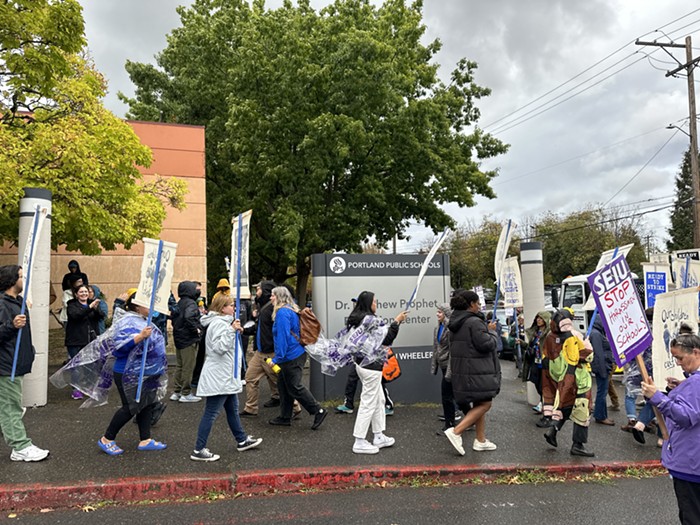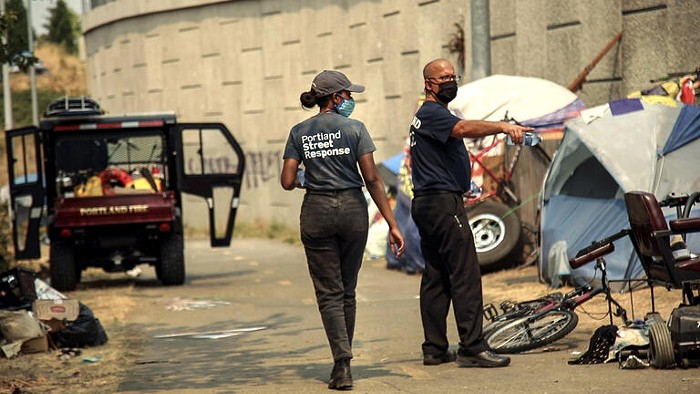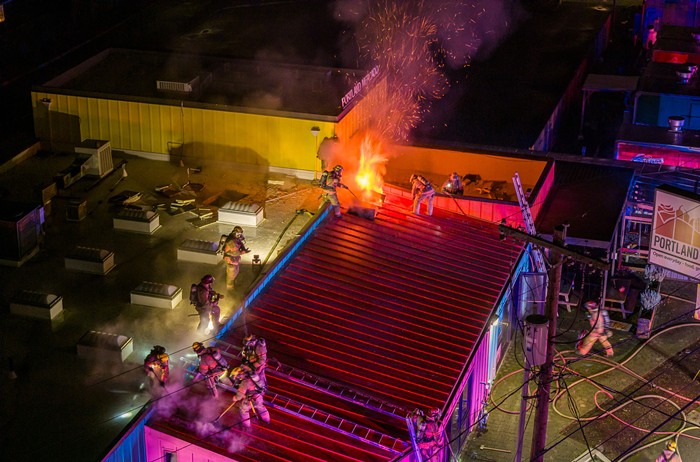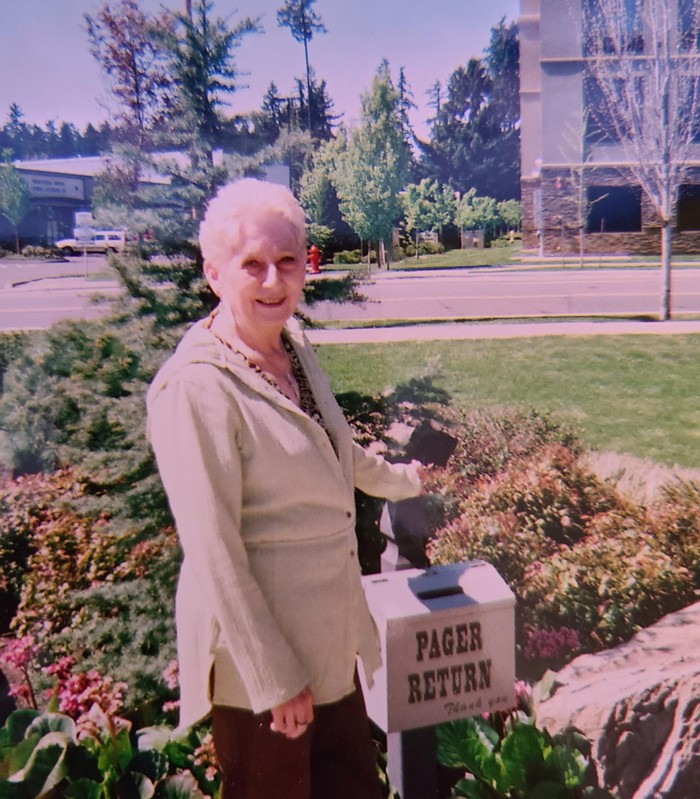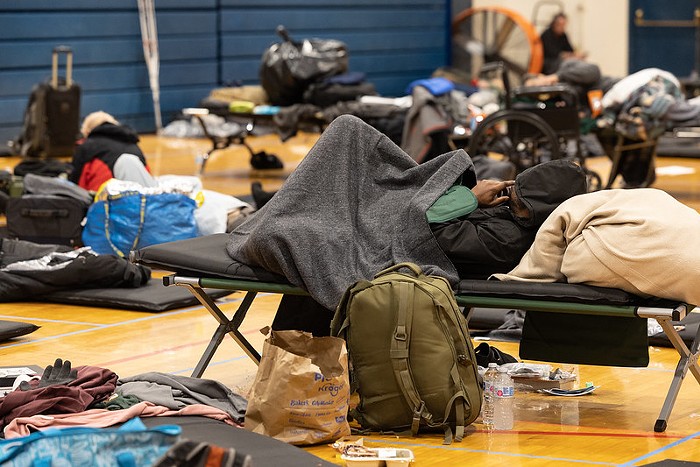
It’s the first week of summer, and already there are four active wildfires that have burned at least 16,500 acres across Oregon, the state is in a severe drought, and there is dry lightning in the forecast.
While last year’s wildfire season was historically severe, Oregon fire officials expect it to be even worse this year due to high temperatures and minimal rain that have dried out vegetation, creating easy kindling for wildfires. According to the Oregon Department of Forestry, the number of fires in 2021 is already more than double the yearly average from 2011 to 2020—and we’re only halfway through the year.
State officials are urging Oregonians to prepare for fire season now. Here are a few ways to do that:
Sign up for alerts
Oregon has a couple options for electronic alerts systems, and it’s a good idea to take advantage of all of them. For air quality updates, use the Oregon Air App from the state Department of Environmental Quality (DEQ). The app uses data from all of the DEQ’s air monitoring sites and lists the general air quality index, as well as a breakdown of specific pollutant levels, like nitrogen dioxide and ozone. The Oregon Smoke Blog also has a sign up form to receive text or email updates about the air quality from the Oregon DEQ.
PublicAlerts, a regional alert system for Oregon and Washington residents hosted by the Portland Bureau of Emergency Management (PBEM), also offers wildfire alerts. You can sign up by county here and find additional evacuation resources on PublicAlert’s Wildfire 2021 page.
Additionally, the FEMA app has an alert system that allows users to customize the types of alerts they receive—like fire warnings, air quality, and other public hazards—for up to five different locations. The app categorizes “Clackamas County Portland” and “Multnomah County Portland” as two different places, so it’s a good idea to set alerts for both. The public also automatically receives Wireless Emergency Alerts from FEMA when there is an imminent threat, like a wildfire, in their area. Those alerts function like Amber Alerts and are sent to your phone based on your location.
Plus, if you want to watch a real-time wildfire map, check out the Oregon Office of Emergency Management's Hazard Situation Overview.
Buy your air filters early
If you could smell the wildfire smoke inside your house last summer, it’s a good idea to start accumulating some tools to help mitigate that issue now. The easiest way to filter air in your home is with an air purifier, which quickly sold out from stores and online retailers during last year’s fires. If an air purifier is cost prohibitive or difficult to find, you can also craft a makeshift purifier using a box fan and a furnace filter. Here’s an instructional video on how to make a filter fan:
If you live in an older home that does not have tight-fitting plastic seals around the windows and doors, you may also want to grab a roll of weatherization tape. Air quality scientist Elliot Gall recommends using the tape—which actually looks like plastic wrap—to seal off windows and create another barrier to smoke particle infiltration. Plastic wrap and painters tape can work in a pinch as well.
Make a plan to stay inside
When the air quality turns hazardous and the sky gets that post-apocalyptic glow, it’s time to hunker down inside. Don’t be an asshole and panic-buy all of the toilet paper, but do stock up on enough pantry essentials to hold you over for a week or two.
If you can’t stay inside and need to spend prolonged time outdoors during a poor air quality event, you may want to invest in a respirator. Respirators, also known as gas masks, filter out some of the larger particles and pollutants in the air. And, because we have not escaped the clutches of the pandemic just yet, here’s a tutorial on how to make your respirator COVID-safe from Team Raccoon, a mutual aid group that distributes respirators.
Step 1: get your respirator, a fresh KN95 mask, scissors, and tape pic.twitter.com/j0SlODvYs2
— TeamRaccoonPDX🦝 (@teamraccoonpdx) June 21, 2021
Don’t be caught off-guard
While Portland is mostly at risk for poor air quality, rather than actual fires, during wildfire season, officials recommend preparing for the worst. Have a go-bag packed and develop a plan for evacuation, in case you get an evacuation notice. Detailed instructions of what to pack and where to go can be found here.
Help if you can
Thousands of people were displaced by last year’s fires and we can, unfortunately, expect the same displacement this year. If you are in a position to donate, the Oregon Worker Relief Fund supports immigrant agriculture workers who are not only displaced by fires, but also continue to work outside during hazardous air conditions. Additionally, the Oregon Food Bank often coordinates food for displaced people during natural disasters and the Wildland Firefighter Foundation supports injured firefighters and the families of deceased firefighters. You can expect to see a more comprehensive list of places you can donate or volunteer with from the Mercury as needs become clearer.
More resources on food assistance, drinking water resources, housing, and recreation site status during wildfire season can be found at wildfire.oregon.gov.



